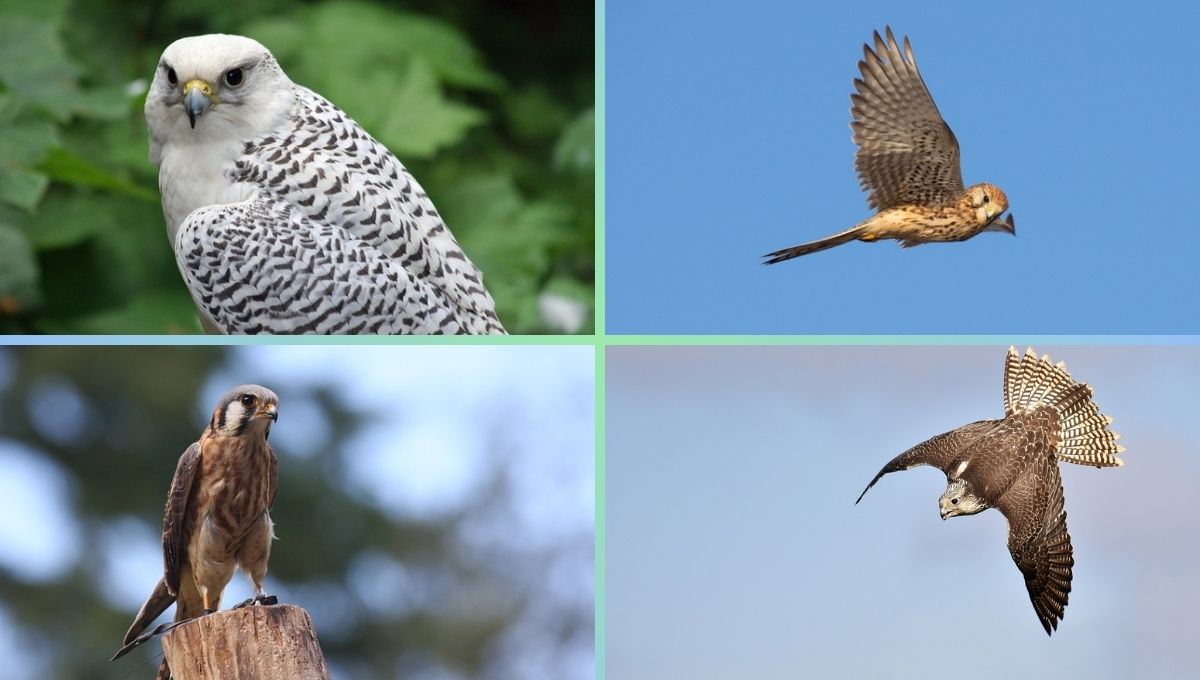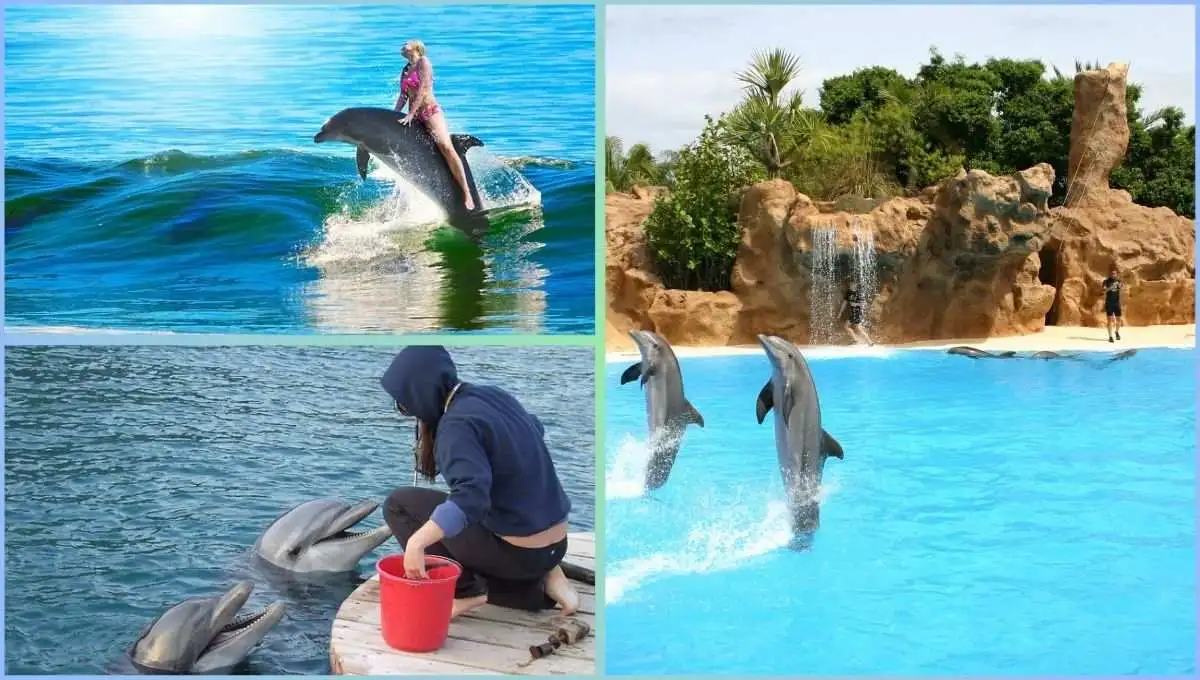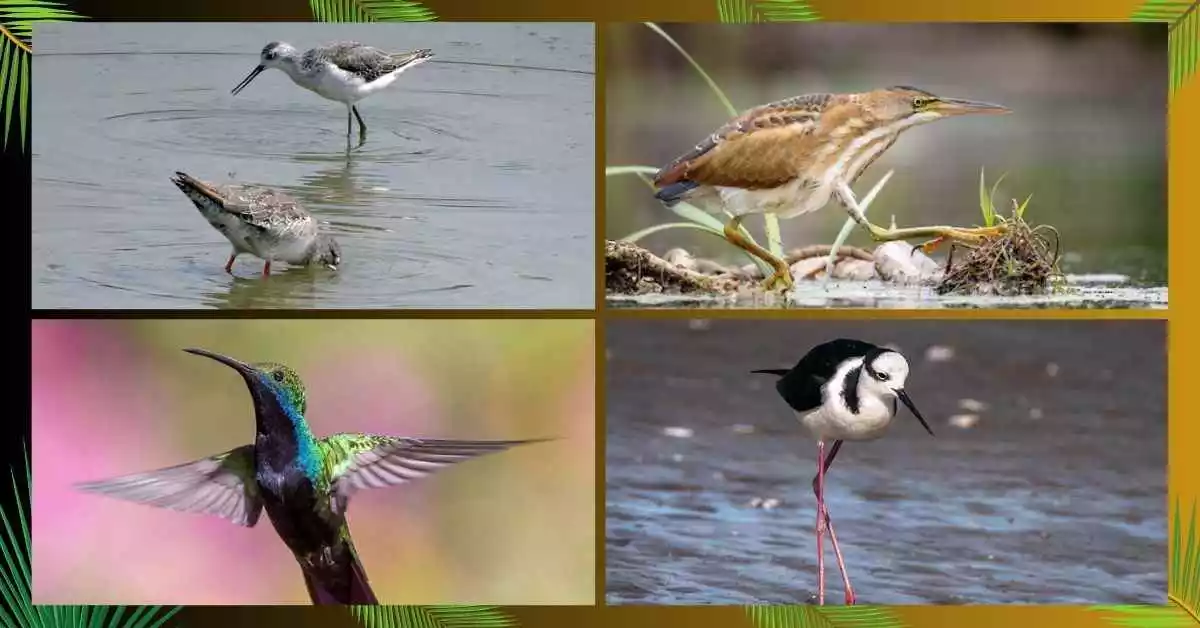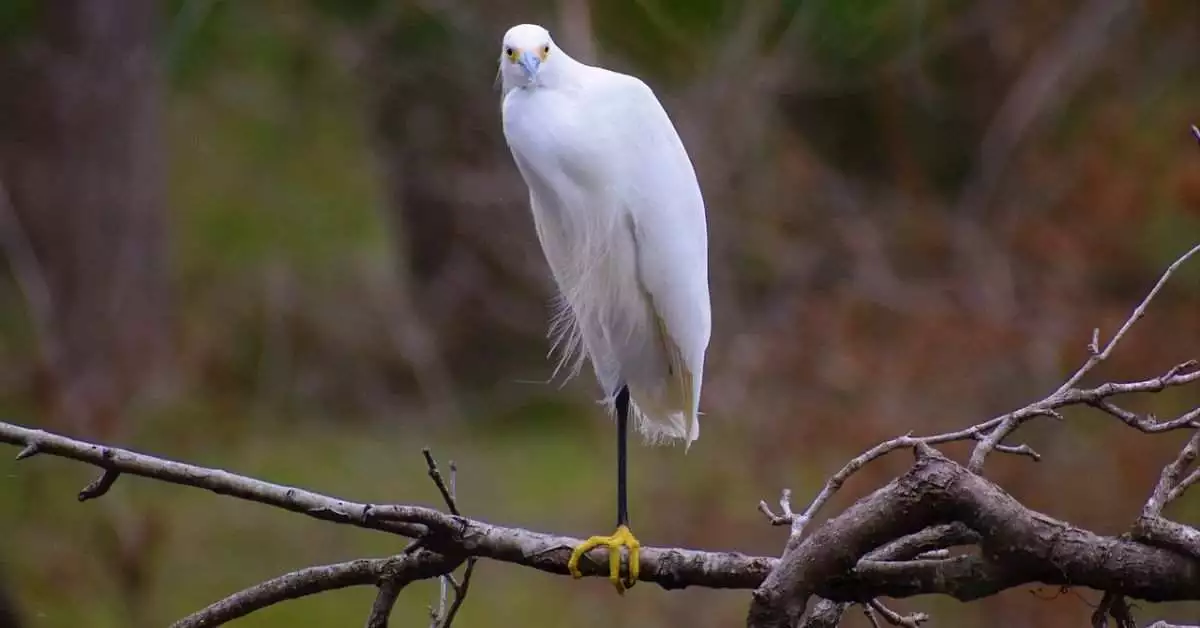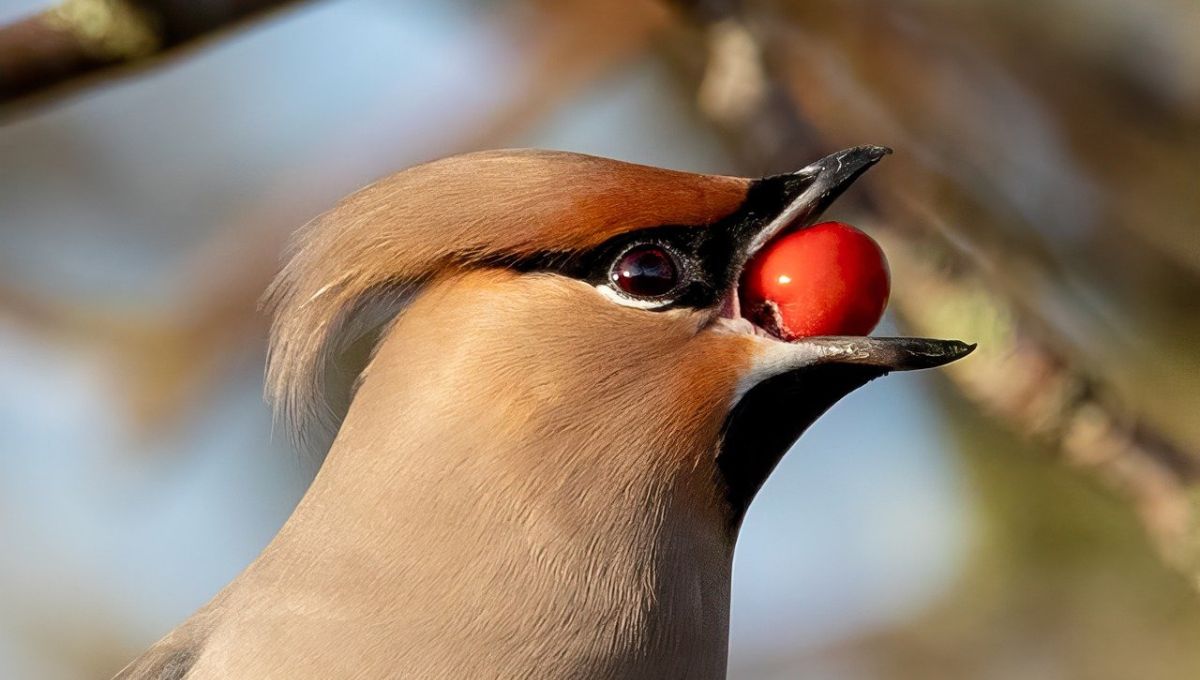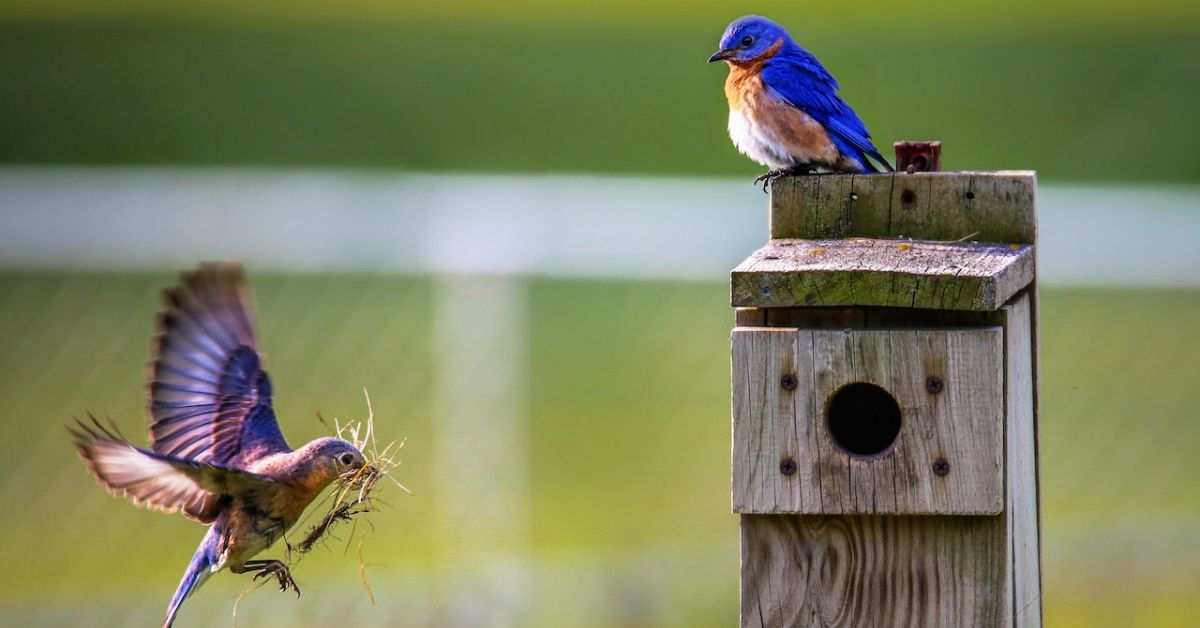Ever wondered what baby deer are called? Well, they’re known as fawns or, if you want to add a touch of cuteness, fawnlings! Imagine small, slim deer with fluffy tails and coats in spots or shades of brown. Their big, dark eyes are hard to resist.
But where do these adorable creatures live? They’re found in forests all over the world, turning the woods into their very own playgrounds.
In this blog post, I will explore everything about baby deer, their lifecycle, what are they called, their habitat, what they eat, and everything that people want to know about them. Ready to explore the enchanting world of baby deer? Let’s dive in!
What is a baby deer called?
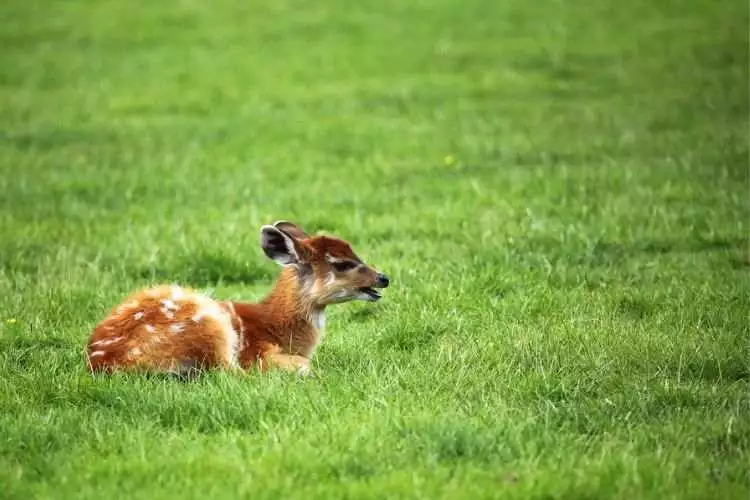
A baby deer is called a fawn. Fawns are born in the spring and summer and weigh between 6 and 10 pounds. They are very small and vulnerable, so they stay hidden in the forest for the first few weeks of their lives.
Baby Deer Sounds or Noise
So, what’s the chatter in the world of baby deer? Well, it’s not a big concert, but they do have a few notes to share:
- Bleating or Mewing: Picture a soft, high-pitched “bleat” or “mew” when baby deer want to get mom’s attention or if something is bothering them.
- Gentle Grunts: Sometimes, they throw in a gentle grunt, sort of like saying, “Hey, everything’s cool here!” when they’re feeling content.
- Whining or Whimpering: Feeling unsure or needing a bit of comfort? That’s when you might hear a little whining or whimpering from these tiny forest friends.
Remember, it’s not a loud symphony, just a sweet way for baby deer to talk to their moms and friends in the wild.
Related: Siberian Musk Deer (Vampire Deer) – Facts, Habitat, Diet, Size
Baby Deer Lifespans
The lifespan of a baby deer, or a deer in general, can vary depending on the species and environmental factors. Here’s a general overview:
- Baby Deer Days: Baby deer, or fawns, start with a few delicate months. Their first goal is to navigate the wild world and steer clear of danger.
- Growing Up: If they make it through the baby stage, they become adult deer. How long they live depends on where they are. In the wild, it can be anywhere from 4 to 15 years, with lots of factors like food and safety playing a part.
- Life in Captivity: Some deer live in places like wildlife reserves. Here, they might have longer lives because they’re protected from many dangers and might even get some extra care from humans.
Remember, things like sickness, accidents, and what humans do can affect how long deer live. And the type of deer matters too! So, each deer’s story is a bit different.
How do fawns survive?
Ever wondered how baby deer, called fawns, manage to stay safe in the big, wild world? Well, they’ve got a clever trick up their furry sleeves!
First off, when fawns are born, they come with special white spots on their coats. These spots aren’t just for show—they’re like nature’s camouflage. Picture this: a fawn nestled in the forest, the white spots blending in perfectly with the surroundings, making it tricky for predators to spot them.
But that’s not all. While the little ones are playing the hide-and-seek game with their spots, their moms take turns going out to grab some food. This way, the fawns stay tucked away in the undergrowth, safe and sound, until it’s time for a family reunion. So, there you have it—the secret to how fawns rock at survival in the wild!
What do they look like?

Ever wondered about baby deer, aka fawns? They’re like the little rockstars of the forest!
So, here’s the scoop: Fawns are small and slim, like the Bambis of real life. Their tails? Short and tufted, making them even more charming.
Now, let’s talk fashion—fawns either flaunt spots or sport cozy shades of brown. Super cute, right? And those eyes! Big, dark, and totally captivating.
In simple terms, fawns are the absolute cuties you’d spot in the great outdoors!
Where do they live?
Curious about where these little forest darlings live? Well, fawns call the forests their home sweet home!
You can find them in woodlands all around the world, turning the trees and bushes into their personal playgrounds.
From North to South, East to West, these tiny adventurers explore the great outdoors, making the forest their cozy haven.
So, if you ever find yourself wandering through the woods, keep an eye out—you might just spot these enchanting fawns in their natural habitat!
The life of a baby deer
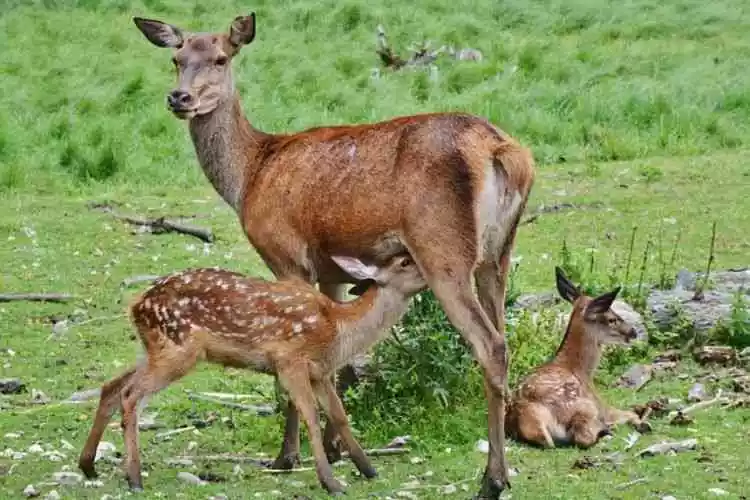
How Fawns Stay Safe
Ever wondered how baby deer, called fawns, stay safe? Well, they’re born with special white spots on their coats, like nature’s own invisibility cloak. This helps them hide in the forest while their moms go out to grab some grub.
Learning to Walk and Play
Now, here’s a cool fact: fawns are speedy learners! Within just a few hours of being born, they can walk. And guess what? In just a few days, they’re pros at running and jumping. Talk about fast learners, right?
What’s on the Menu for Fawns
When it comes to food, baby deer start with their mom’s milk for the first few months. After that, they’re on a veggie diet—chomping on leaves, twigs, and berries. It’s like their very own buffet in the great outdoors!
Predators of baby deer
Ever wondered who might be eyeing those cute baby deer, or fawns, in the wild? Well, it turns out they have a few predators, including wolves, coyotes, foxes, and bears. Yep, the forest has its own circle of life.
But fear not, little fawns have some tricks up their sleeves to stay safe. First off, they’ve got that nifty camouflage we talked about earlier—helps them blend into the background like forest ninjas. Plus, they stick close to their moms, who are like the superheroes of the forest, providing protection.
When they sense danger, these smart little beings might just freeze, staying still and quiet. It’s like their secret mission to avoid being noticed by any potential predators. Nature, you’ve got to admire its survival strategies!
The future of baby deer
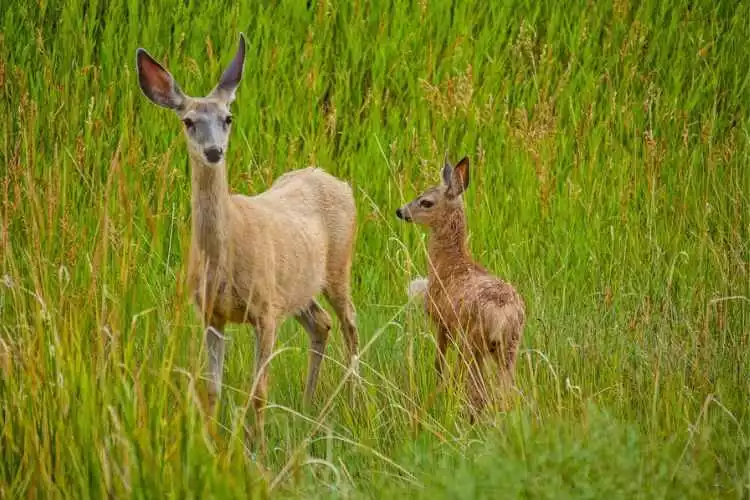
Picture this: a snoozing baby deer, dreaming of the big, wide forest world. But what does the future hold for these little forest dreamers?
Surviving to Adulthood
Here’s a wild fact—only about half of all baby deer, or fawns, make it to adulthood. It’s like a nature adventure where not everyone gets a golden ticket, but those who do, grow up to be majestic forest dwellers.
Facing the Challenges
Now, it’s not all sunshine and rainbows for these tiny wonders. They’ve got some hurdles on their path. Habitat loss, like losing their special playgrounds in the woods, is a big challenge.
Then there’s the watchful eye of hunting and the tricky business of diseases. It’s like their journey comes with a few obstacles to dodge.
So, as these baby deer snuggle into their dreams, the future is a mix of challenges and triumphs in the wild. Here’s to hoping the forest stays a magical haven for these adorable dreamers!
Baby Deer Fun Facts
- Speckled Style: Baby deer, or fawns, wear a fashion statement from birth – white spots on their reddish-brown fur. It’s like their secret camouflage!
- Tiny Talkers: Fawns have a language of soft bleats and gentle grunts to chat with their moms. It’s the baby deer version of “Hey, Mom, I’m here!”
- Born to Walk and Jump: Imagine this: within a few hours of arriving in the world, fawns are on their feet. And in just a few days, they’re not just walking, they’re jumping and exploring.
- Hide-and-Seek Masters: When mom goes for groceries (aka finding food), fawns become little hide-and-seek champions. They stay super still and quiet in tall grass or bushes to stay safe from bigger animals.
- Tail Cuties: Take a look at their tails – short and tufted, making them even more adorable. It’s like a mini-flag waving in the forest!
- First Bites: At first, it’s all about mom’s milk. But soon, they’re munching on leaves, twigs, and even berries. Baby deer turn into little vegetarians pretty fast!
- Freeze Mode: Feeling danger nearby? Fawns don’t run. They freeze! It’s their clever trick to stay invisible and avoid any trouble.
- Tiny Footprints, Big Adventures: Check out their hoof prints – small and cute. It’s like they’re leaving behind a trail of adorable footprints wherever they go.
- Global Playground: Baby deer aren’t picky about where they live. You’ll find them exploring forests all around the world, turning every place into their personal playground.
- Growing Up Challenges: Here’s a fact: not every fawn becomes an adult. They face challenges like big animals wanting to have them for lunch, sickness, and changes in their homes. It’s like they’re little warriors in the wild!
Conservation efforts
Ever wondered who the unsung heroes are, working tirelessly to safeguard the enchanting world of baby deer? Well, enter the conservation warriors, armed with dedication and a passion for preserving the magic of the woods.
1. Habitat Protection: Imagine a shield around the natural playgrounds of baby deer. That’s exactly what habitat protection does. Conservationists are working hard to ensure that the forests, where these little wonders thrive, remain safe and untouched.
2. Predator Control: Just like a watchful guardian, predator control is in place to keep potential threats at bay. By carefully managing the balance of predators, conservationists create a safer environment for baby deer to roam and grow.
3. Captive Breeding Programs: In the realm of conservation, hope takes shape in captive breeding programs. These initiatives act as a safety net, ensuring that if the wild becomes a bit too challenging, there’s a backup plan to nurture and protect baby deer.
Through these united efforts, a symphony of care and conservation resonates, echoing a commitment to safeguarding the delicate balance of nature. The guardians of the forest gems are writing a story where baby deer can dance freely in the wild, ensuring that their magic persists for generations to come.
FAQ / People Also Ask
-
What is a baby deer called?
A baby deer is called a fawn. Fawns are born in the spring and summer and weigh between 6 and 10 pounds. They are very small and vulnerable, so they stay hidden in the forest for the first few weeks of their lives.
-
What do baby deer eat?
Fawns drink their mother’s milk for the first few months of their lives. They then start to eat solid food, such as leaves, berries, and grasses.
-
Where do baby deer live?
Fawns live in a variety of habitats, including forests, meadows, and mountains. They are most active at dawn and dusk.
-
What are baby deer afraid of?
Fawns have many predators, including coyotes, wolves, and foxes. They are also preyed upon by birds of prey, such as eagles and hawks.
-
How long do baby deer live?
Fawns typically live for 10 to 20 years.
-
Can baby deer swim?
Yes, baby deer can swim. They are very good swimmers and can even cross rivers and lakes.
-
Do baby deer have spots?
Yes, baby deer have spots. The spots help them camouflage in the forest and protect them from predators.
-
How fast can baby deer run?
Baby deer can run up to 30 miles per hour. They are very fast runners and can outrun most predators.
-
How high can baby deer jump?
Baby deer can jump up to 6 feet high. They are very agile jumpers and can jump over fences and other obstacles.
-
Are baby deer social animals?
Yes, baby deer are very social animals. They love to play and interact with other deer. They are also very protective of their mothers and other family members.
Conclusion
So, that’s the scoop on baby deer, our forest buddies! Some make it to grown-up life, and some face challenges. But guess what? There are nature heroes making sure these tiny pals have a safe place to call home. These heroes are like guardians, looking out for the baby deer playgrounds, keeping things in balance with other critters, and having backup plans just in case. It’s all about giving these little guys a fair shot.
So, what’s our part in this story? We’re the helpers, the cheerleaders, and the keepers of the forest magic. As long as we stick together, the future for baby deer looks bright—more exploring, more dreaming, and more dancing in the wild. Cheers to a world where baby deer make our forests a bit more magical!

